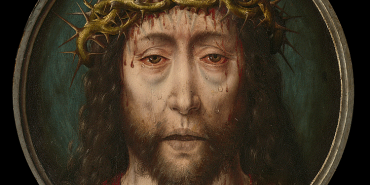A Photojournal of Compassion

The Nazarene founders might have chosen October 1907 as the church's official anniversary date, for that's when a new denomination was created at the First General Assembly in Chicago. However, the Second General Assembly, in October 1908, expanded the infant denomination's numbers and made the denomination truly national by reaching into the South.
When the founders chose an anniversary date in 1923, they trumped the "logic of firsts" with "the logic of inclusion." They deliberately chose 1908. We have good reason to be glad that they did.
The primary agenda at both assemblies was to effect mergers. The assemblies are so closely linked that General Superintendent John Goodwin believed that the Second General Assembly functioned essentially as an adjourned (or carryover) session of the First. The assemblies united regional churches from America's East and West (1907) and South (1908). Mergers also occurred later, including two major accessions in 1915. But the three churches uniting in 1907-8 gave the united church its essential shape and character.
The East-West union merged regional churches with compatible cultures. The North-South union was different, though. The regional differences between the North and South merger partners were sharper and more complex. Also, the divisive politics of 19th century America loomed as the backdrop.
In the 1820s, the slavery issue had begun alienating Americans by region. Beginning in the 1840s, the growing animosity between North and South led to divisions within the major Protestant denominations - Presbyterians, Baptists, and Methodists.
In Broken Churches, Broken Nation, historian C. C. Goen says these schisms accelerated the national movement toward war. Each division of a national church loosened the bonds that had once tied Americans together.Then came the bloody and devastating Civil War from 1861-65. Slavery, regionalism, and war had poisoned the well of American Christianity. The situation merited H. Richard Niebuhr's condemnation that the broken denominations stood out on a bleak cultural landscape as naked emblems of "the world's triumph over the Church."
Those who met in October 1908 at Pilot Point, Texas, understood this history. The older ones had lived it and the younger ones had learned of it.
An ardent supporter of Lincoln, Phineas Bresee had draped his pulpit with the American flag during the Civil War, while Mary Cagle and C. B. Jernigan, both born during the conflict's final months, were raised in an impoverished, war-ravaged South.
The Methodists did not reunite their northern and southern denominations until 1939. The Presbyterians did not do so until 1983. And the Baptists have never done so. But in 1908, in a small Texas town, the holiness people looked beyond the social and political estrangement, and the legacy of suspicion and regional stereotyping. They united forces in the name of Christian holiness.
Historian Abel Stephens wrote that American Methodism succeeded in its first century because its preachers proclaimed that God's divine grace is imparted to sinners, and therefore changes them. Early Nazarenes inherited this message of a transforming grace.The call to reconciliation is at the gospel's core.
We're called to be reconciled first to divine love and then to each other.
The work of divine grace that begins as inwardness is manifested in outwardness.
Holiness is a life that creates new social realities.The general assembly minutes reveal that on the morning of October 13, 1908, while speeches were made supporting the merger, people experienced "great gladness and joy, especially when brethren of the South hugged brethren from the North." Then, after the merger vote passed unanimously, "a burst of holy joy continued for several minutes, [with] brethren of the South throwing their arms around brethren of the North, East and West."
The burst of holy joy continued in a spontaneous "Hallelujah March" around the meeting tent.The event at Pilot Point left an indelible impression on those present. For them, it was an experience of reconciling love and a symbol of the gospel's triumph over the divisive and chaotic forces of this world.
And today the merger at Pilot Point remains an enduring and potent symbol of the social realities of holiness. The experience of our founders retains the power to speak to us as a church whose people now represent many different nations, races, cultures, and languages.
Stan Ingersol is manager of the Nazarene Archives at the International Headquarters of the Church of the Nazarene.
Holiness Today, November/December 2008
Please note: This article was originally published in 2008. All facts, figures, and titles were accurate to the best of our knowledge at that time but may have since changed.




